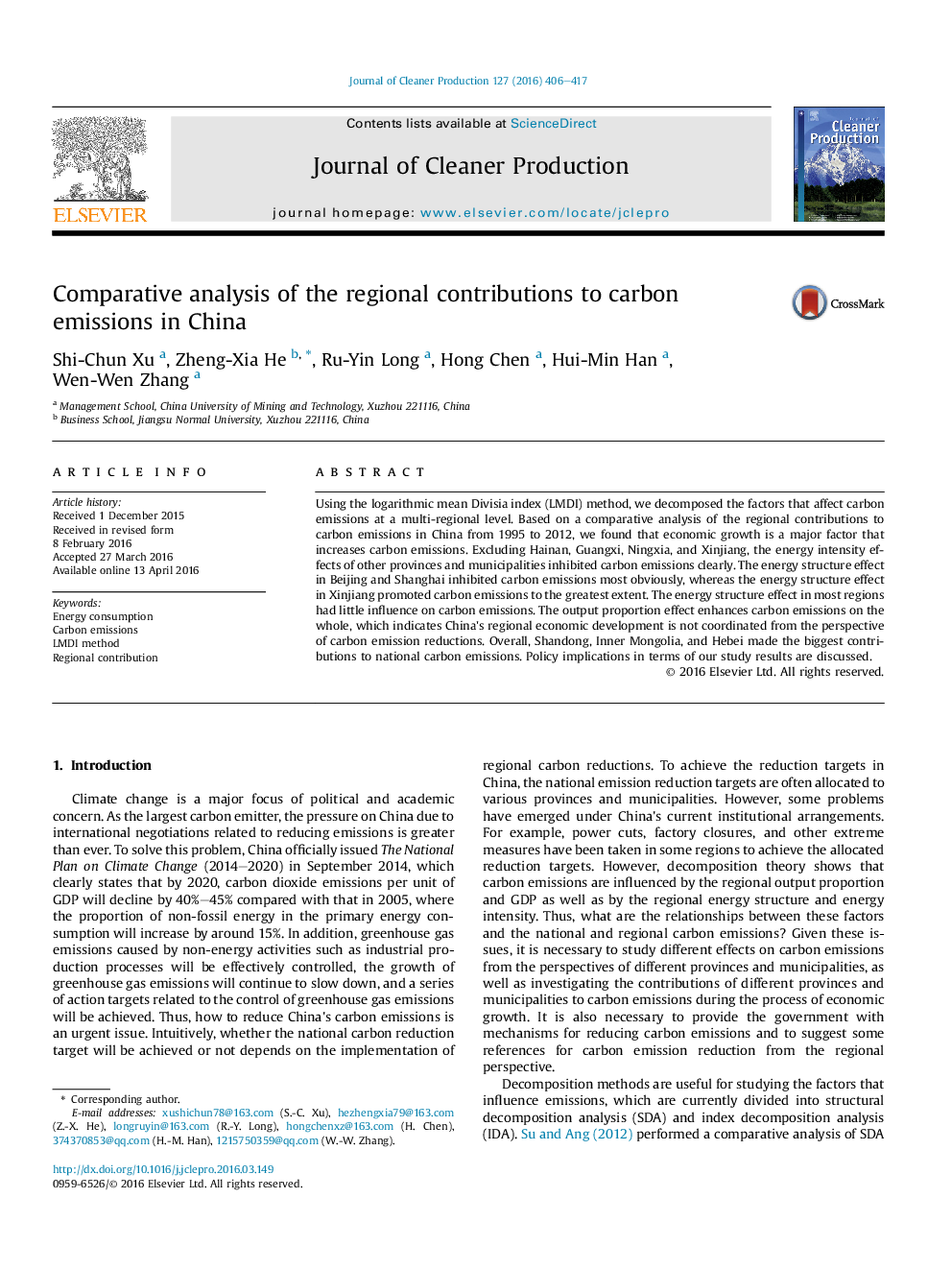| Article ID | Journal | Published Year | Pages | File Type |
|---|---|---|---|---|
| 1744099 | Journal of Cleaner Production | 2016 | 12 Pages |
•We decomposed the factors affecting carbon emissions from multi-regional perspective.•The energy structure effects of various regions differed greatly.•The energy intensity effects of most regions inhibited carbon emissions.•The output proportion effect indicates regional economic development is not coordinated.
Using the logarithmic mean Divisia index (LMDI) method, we decomposed the factors that affect carbon emissions at a multi-regional level. Based on a comparative analysis of the regional contributions to carbon emissions in China from 1995 to 2012, we found that economic growth is a major factor that increases carbon emissions. Excluding Hainan, Guangxi, Ningxia, and Xinjiang, the energy intensity effects of other provinces and municipalities inhibited carbon emissions clearly. The energy structure effect in Beijing and Shanghai inhibited carbon emissions most obviously, whereas the energy structure effect in Xinjiang promoted carbon emissions to the greatest extent. The energy structure effect in most regions had little influence on carbon emissions. The output proportion effect enhances carbon emissions on the whole, which indicates China's regional economic development is not coordinated from the perspective of carbon emission reductions. Overall, Shandong, Inner Mongolia, and Hebei made the biggest contributions to national carbon emissions. Policy implications in terms of our study results are discussed.
